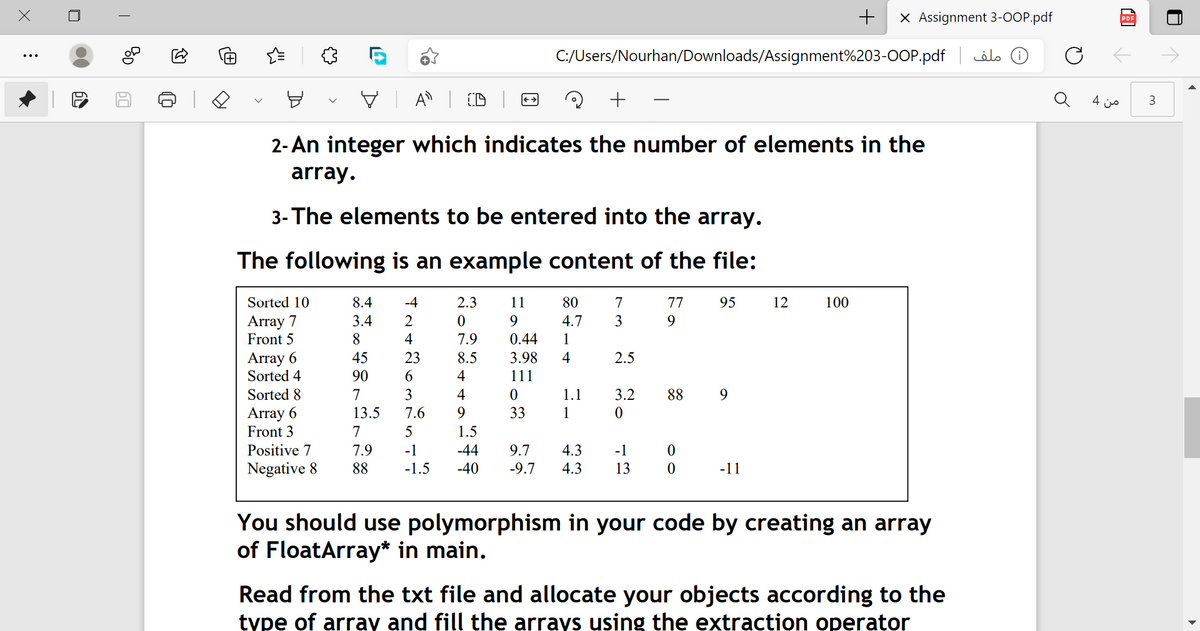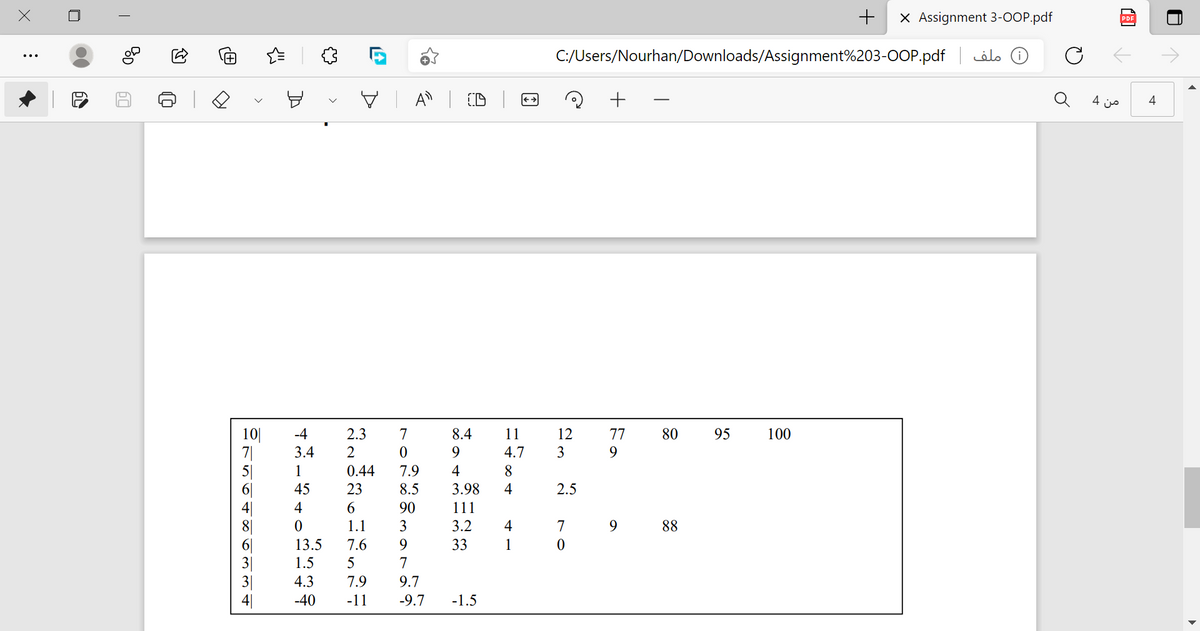Declare and implement 5 classes: FloatArray, SortedArray, FrontArray, PositiveArray & NegativeArray. 1- The FloatArray class stores a dynamic array of floats and its size. It has: - A parameterized constructor that takes the array size. - An add method that adds a float at the end of the array. - Overloading for the insertion operator << to write the array to a file (ofstream) - Overloading for the extraction operator >> to read the array elements from the file (ifstream) and add them to the array. - A destructor to deallocate the array 2- The SortedArray inherits from FloatArray. It has: - A parameterized constructor that takes the array size. - An add method that adds a float at the right place in the array such that the array remains sorted with every add. Don’t add to the array then sort but rather add in the right place. 3- The FrontArray inherits from FloatArray. It has: - A parameterized constructor that takes the array size. - An add method that adds a float at the front of the array. 4- The PositiveArray that inherits from SortedArray. It has: - A parameterized constructor that takes the array size. - An add method that adds a float to the array only if it’s a positive number. It then uses the add method of SortedArray. 5- The NegativeArray that inherits from SortedArray. It has: - A parameterized constructor that takes the array size. - An add method that adds a float to the array only if it’s a negative number. It then uses the add method of SortedArray. The only input to your program is the names of the input txt file and output txt file name. The input text file will have exactly 10 lines. Each line will have: 1-One of 5 words: Array, Front, Sorted, Positive, or Negative. This indicates the type of array to create. 2-An integer which indicates the number of elements in the array. 3-The elements to be entered into the array. You should use polymorphism in your code by creating an array of FloatArray* in main. Read from the txt file and allocate your objects according to the type of array and fill the arrays using the extraction operator >>. After finishing reading the file, you should write your arrays to another text file using the insertion operator<<. Where each line begins with the number of elements followed by the character ‘|’, a tab, then the array elements separated by tabs. Don’t forget to deallocate by deleting your objects in the main after finishing.
Declare and implement 5 classes: FloatArray, SortedArray,
FrontArray, PositiveArray & NegativeArray.
1- The FloatArray class stores a dynamic array of floats and its
size. It has:
- A parameterized constructor that takes the array size.
- An add method that adds a float at the end of the array.
- Overloading for the insertion operator << to write the array to a
file (ofstream)
- Overloading for the extraction operator >> to read the array
elements from the file (ifstream) and add them to the array.
- A destructor to deallocate the array
2- The SortedArray inherits from FloatArray. It has:
- A parameterized constructor that takes the array size.
- An add method that adds a float at the right place in the array
such that the array remains sorted with every add. Don’t add to
the array then sort but rather add in the right place.
3- The FrontArray inherits from FloatArray. It has:
- A parameterized constructor that takes the array size.
- An add method that adds a float at the front of the array.
4- The PositiveArray that inherits from SortedArray. It has:
- A parameterized constructor that takes the array size.
- An add method that adds a float to the array only if it’s a
positive number. It then uses the add method of SortedArray.
5- The NegativeArray that inherits from SortedArray. It has:
- A parameterized constructor that takes the array size.
- An add method that adds a float to the array only if it’s a
negative number. It then uses the add method of SortedArray.
The only input to your
and output txt file name. The input text file will have exactly
10 lines. Each line will have:
1-One of 5 words: Array, Front, Sorted, Positive, or Negative.
This indicates the type of array to create.
2-An integer which indicates the number of elements in the
array.
3-The elements to be entered into the array.
You should use polymorphism in your code by creating an array
of FloatArray* in main.
Read from the txt file and allocate your objects according to the
type of array and fill the arrays using the extraction operator
>>.
After finishing reading the file, you should write your arrays to
another text file using the insertion operator<<.
Where each line begins with the number of elements followed
by the character ‘|’, a tab, then the array elements separated
by tabs.
Don’t forget to deallocate by deleting your objects in the main after
finishing.
Don’t take any other inputs from the user
use c++ language
the following images introduce the input and output format


Step by step
Solved in 2 steps









